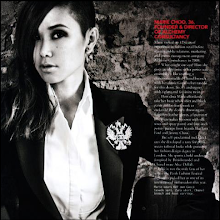Tea is a big thing in the Japanese culture,
and Kyoto is famed for producing some of the finest green teas in the world. To
the Japanese, tea is not just a beverage and tea drinking is an experience that
is respected and enjoyed.
If green tea is your cup of tea (no pun intended), I
would recommend a visit to the Ippodo (not to be confused with Ippudo ramen), one
of the oldest tea retailers in Kyoto with over 300 years of history.
The Kaboku
tearoom located at its flagship store on Teramachi Street offers guests the
opportunity to learn and enjoy the tea brewing process with their choice of tea
from the menu, rather than simply having it prepared and served by a staff.
We choose the koicha set under the weekday special.
Kana, our lovely tour guide has been learning the art of tea making for over 6 years and kindly offered to show us how to make our own matcha.
Matcha refers to powder green tea and there are 2 kinds - the thicker koicha (as pictured above) and the thinner usucha. It was my first time trying koicha and I never knew it existed because the common way to consume matcha is usucha way. All tea in the teahouse are served with a sweet and my tour guide told me the right way to eat it is to have it before drinking the tea. I would have done it otherwise and have the sweet after drinking the matcha.
To make your matcha, you would need a chasen (bamboo tea whisk) and matcha chawan (tea bowl).
I tried my hands at making my own usucha. I looked so serious! Well, got to respect the tea making tradition right?
Halfway through my usucha making. Need to whisk it better to create more foam.
We finished the tea appreciation session with a bancha, and I chose a genmaicha (tea with roasted rice) as my choice.
There is a retail section next tea house where you can buy the different types of green tea.
Visiting Ippodo is definitely a great way to learn more about tea appreciation and the art of
tea making. By the end of the session, I learnt more about the various types of green teas – matcha, gyokuro, sencha, and bancha. I
left Ippodo richer with tea knowledge and poorer in yen, but with bags full of
tea!
In fact, I love my tea appreciation session at Ippodo so much that I bought my very own tea so I can make matcha at home. Not too shabby looking right?
Since we are on the topic of green tea, don't forget to try the soft serve in matcha flavour.
Do get your hands on matcha kit kats too! You can buy them at the airport before you leave. Try both the matcha and sakura matcha flavours. Stock up for they are really delish.
And don't forget about the Malebranche Okoicha langue de chat that I wrote about in my previous entry about Kyoto!
And don't forget about the Malebranche Okoicha langue de chat that I wrote about in my previous entry about Kyoto!


























































